
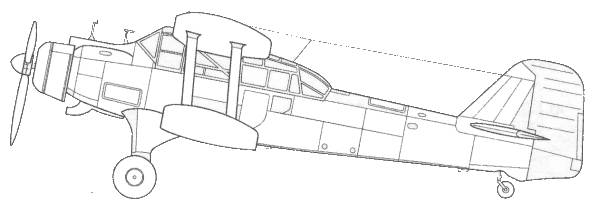
Albacore Mk.I
The Fairey Albacore was a carrier-borne biplane torpedo bomber built between 1939 and 1943 for the Royal Navy Fleet Air Arm . It had a three-man crew and was designed for spotting and reconnaissance as well as level bombing, dive bombing and as a torpedo bomber. The Albacore, popularly known as the "Applecore", was conceived as a replacement for the aging Fairey Swordfish, which had entered service in 1936. However, the Albacore served with the Swordfish and was retired before it, being replaced by the Fairey Barracuda and Grumman Avenger monoplane torpedo bombers.
The Albacore prototypes were built to meet Specification S.41/36 for a three-seat TSR (torpedo/spotter/reconnaissance) for the FAA to replace the Swordfish. The Albacore was designated TBR (torpedo/bomber/reconnaissance) and unlike the Swordfish, was fully capable of dive bombing: The Albacore was designed for diving at speeds up to 215 knots (400 km/h) lAS with flaps either up or down, and it was steady in a dive, recovery being easy and smooth. The maximum under wing bomb load was 4 x 500 lb bombs. The Albacore had a more powerful engine than the Swordfish and was more aerodynamically refined. It offered the crew an enclosed and heated cockpit. The Albacore also had features such as an automatic life raft ejection system which triggered in the event of the aircraft ditching.
The first of two prototypes flew on 12 December 1938 and production of the first batch of 98 aircraft began in 1939. Early Albacores were fitted with the Bristol Taurus II engine and those built later received the more powerful Taurus XII. Boscombe Down testing of the Albacore and Taurus II engine, in February 1940, showed a maximum speed of 160 mph (258 km/h), at an altitude of 4,800 ft (1,463 m), at 11,570 lb (5,259 kg), which was achieved with four under-wing depth charges, while maximum speed without the depth charges was 172 mph (277 km/h). An Albacore fitted with the Taurus II engine and carrying a torpedo weighed 11,100 lb (5,045 kg).
Initially, the Albacore suffered from reliability problems with the Taurus engine, although these were later solved, so that the failure rate was no worse than the Pegasus that equipped the Swordfish. It remained less popular than the Swordfish, however, as it was less agile, with the controls being too heavy for a pilot to take effective evasive action after dropping a torpedo.
Eventually, there
were 15 first-line FAA squadrons equipped with the Albacore which
operated widely in the Mediterranean. Albacores played a prominent role
in the ill-fated raid on Kirkenes and Petsamo in July 1941. More
successfully they participated in the Battle of Cape Matapan and the
fighting at El Alamein as well as supporting the landings at Sicily and
Salerno. During the period September 1941 to end of June 1943, No. 828
Squadron, based at RAF Hal Far, Malta, operated a squadron of Albacores
under some of the most severe blitz conditions imaginable during the
siege of Malta, mainly against Italian shipping and shore targets in
Sicily.
In 1943, the Albacore was progressively replaced in Fleet Air Arm
service by the Barracuda. The last FAA Albacore squadron, No. 841
Squadron, (which had been used for shore based attacks against shipping
in the Channel for the whole of its career with the Albacore),
disbanded in late 1943.
A total of 800 Albacores were built.
The Kit
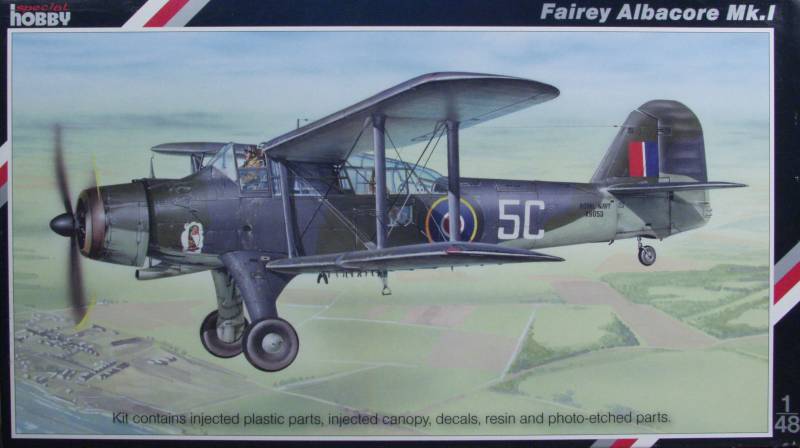
The Special Hobby kit comes in a tray top box with a nice rendition of the Albacore on the top The top is thin but the bottom half is made from thin corrugated cardboard making for a sturdy box. Inside the box all of the main kit parts are in a large resealable bag. The clear parts are in a smaller resealable bag, some resin parts are in a small zip lock bag and the decals and PE are protected by a plastic sleeve. The parts are molded in a dark gray plastic and are typical of short run molding. That said the quality of many of the Eastern European molders has become much better of late and the surface detail on this kit is very close to some of the main stream manufacturers. The surface is smooth and has a semi gloss finish. Surface detail consists of fine recessed panel lines, recessed rivets and fasteners and raised detail where applicable. The fabric detail is subtle and quite nicely rendered. There is some light flash as is the norm for low pressure molded kits the sprue attachment point as a bit large in some places. Looking over the air frame parts I found no obvious surface defects. There are a lot of ejector pin marks and towers but most will not be seen. A couple of the towers may need to be trimmed to get parts to fit properly.
Detail wise the interior is quite extensive which includes usage of both resin and photo etch parts to enhance the kits plastic parts. The first eleven assembly steps are all focused on the interior. The fuselage side walls also have structural detail. The engine is built up from resin parts, a crank case and separate cylinders. The exterior doesn't scrimp on details either, three different air scoops are provided depending on which aircraft you are modeling. There are also PE radar antenna for one variant as well. The wheels are not weighted. Specific rigging information is not given beyond a scrap view of the front showing cross bracing between the wings. You'll need to use the box art or prototype photos for more information. Lets take a look at the parts.
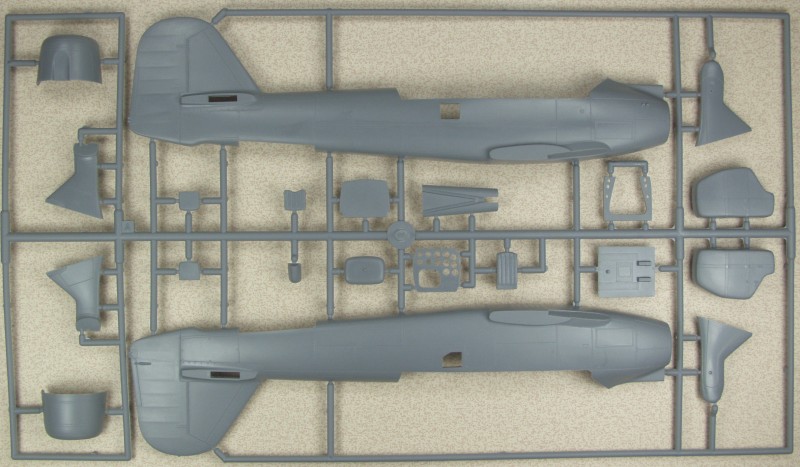
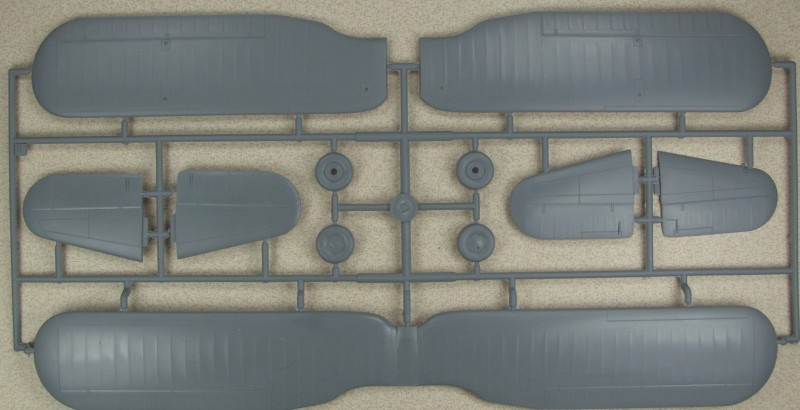
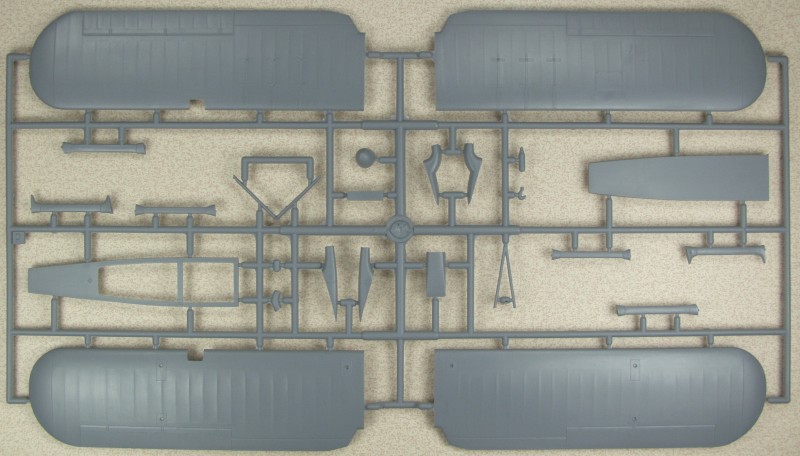
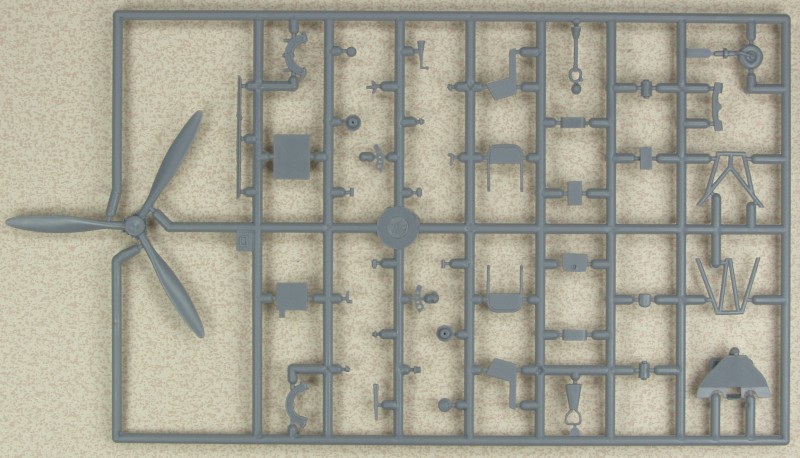
The resin parts all exhibited some flash but are well molded and I found no obvious defects. The bomb racks could be a bit tedious and fragile to clean up
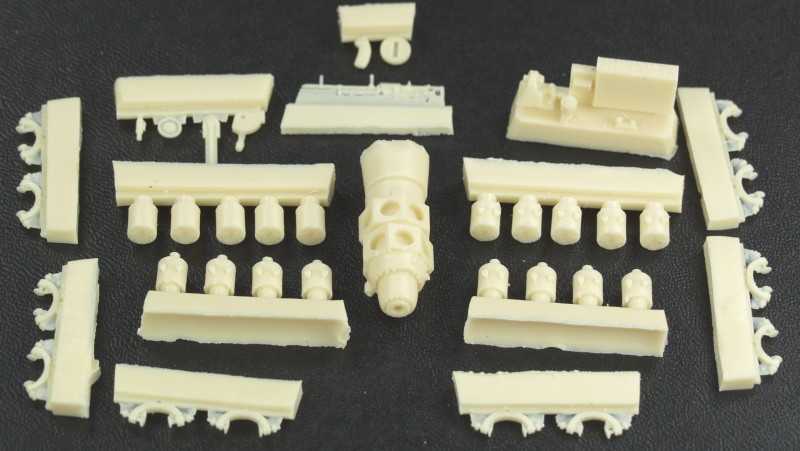
The supplied PE includes instrument panels using the sandwich technique, some cockpit parts including seat harnesses, radar antennas which always look too one dimensional to me.
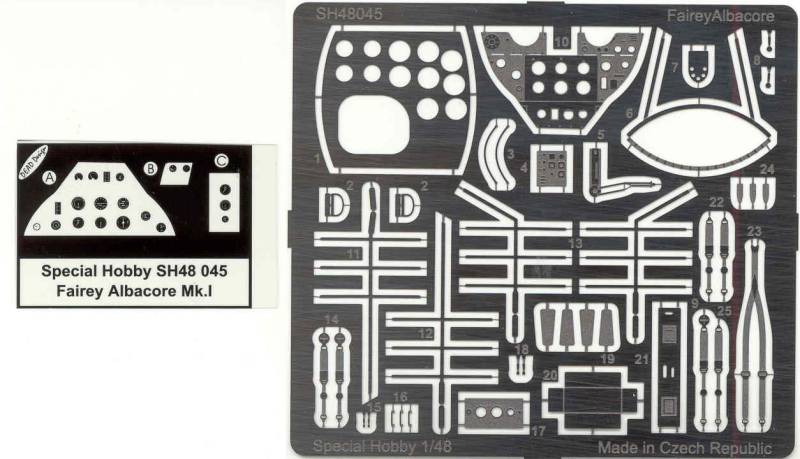
The clear parts are nice and clear with little optical distortion and should look great after a dip in Future.
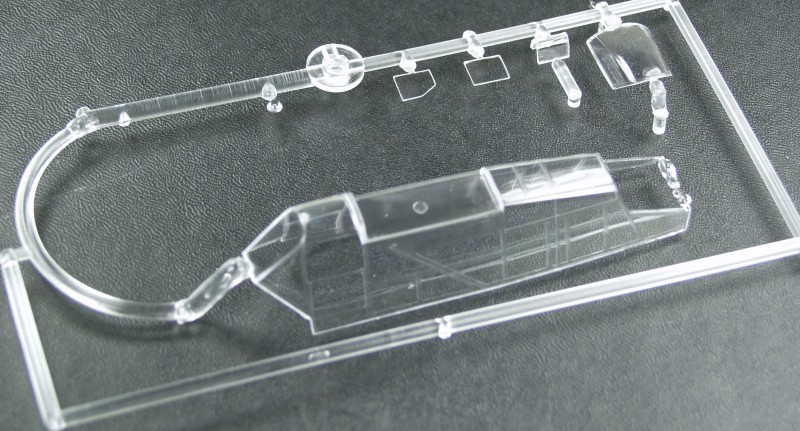
The decals include markings for three aircraft, one from 817th Squadron 1943-44, one from 828th Squadron, Malta 1942, and one damaged by a Bf 109 over the English Channel in 1940. The decals are thin and glossy, appear opaque and except for the roundels labeled '3' are in register. On the '3's the yellow isn't centered. I have had very good luck with Special Hobby decals over the years so these shouldn't present any problems.
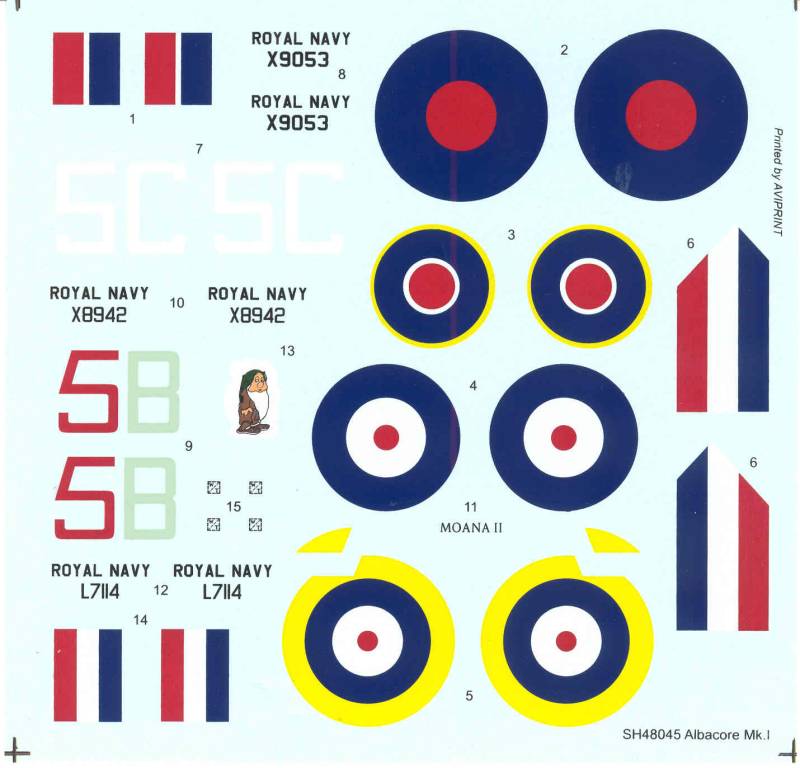
The instructions are typical for Special Hobby a small booklet made up of three pages printed on both sides and folded. The front page has history and specifications in English and Czech, pages two and three are parts maps and a paint chart with Gunze numbers, pages four through nine are the assembly in 28 steps and the last three pages are painting and marking diagrams. Included with my kit was a correction sheet for the colors shown for option A markings.
After Market Goodies
The only I have found is a masking sheet from Eduard EX212
Conclusions
This is a very nice kit needing little in the way of extra details and should build up into a very nice model. The usual warnings apply for short run kits, double and triple check all fits before applying glue and expect there to be some fit issues and areas that need filling and sanding. The other issue is the need for rigging. Although it could be left off it will not look right without it. Recommended for experienced modelers with a few short run kits under their belts.
Links to kit build or reviews
A build can be found here and an in box review here.
References